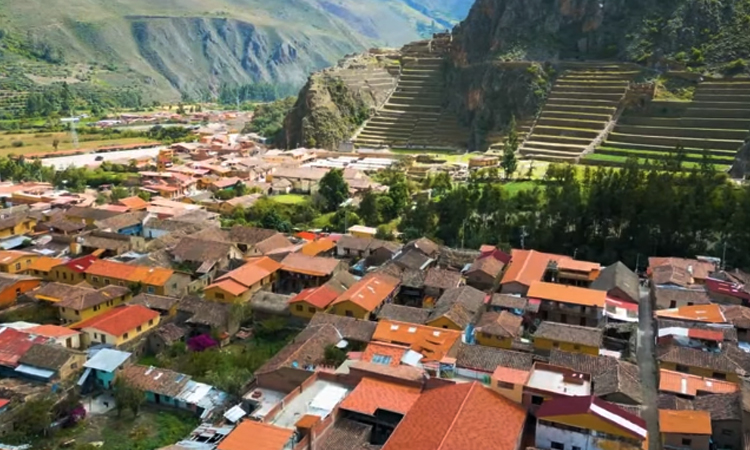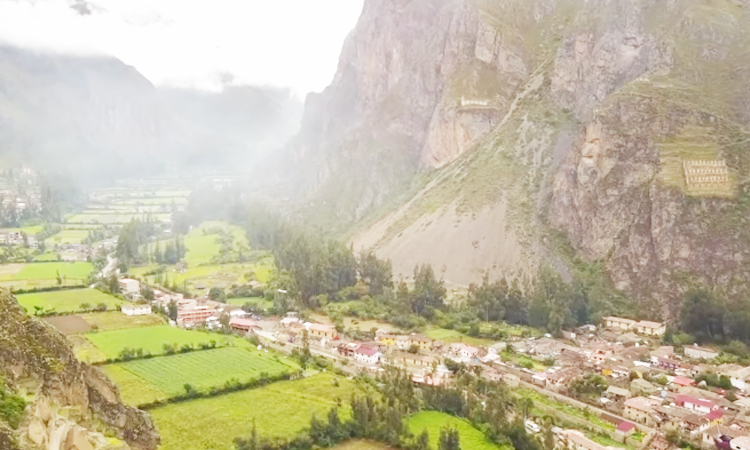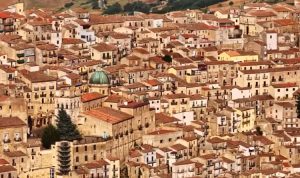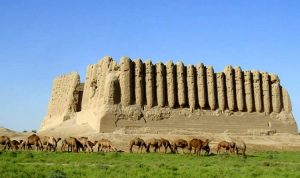APRIMITIVEPLACE – Located in the Sacred Valley of Peru, Ollantaytambo is like a gateway that ushers visitors to the famous Machu Picchu. However, hidden behind its role as a train station is a hidden charm: an “eternal city” of the Incas that is full of mysteries.
Long History of Ollantaytambo
Ollantaytambo was founded in the 15th century as a royal complex and military center of the Incas. The city is nicknamed the “eternal city” because it is said to have remained inhabited by the Incas after the Spanish conquest. Unlike many abandoned Inca sites, Ollantaytambo has been continuously inhabited to this day, making it a unique place to learn about the living culture and traditions of the Incas.
Remarkable Architecture Ollantaytambo

The magnificence of Inca architecture is evident in Ollantaytambo. Giant walls are neatly arranged without any adhesive, showing the incredible skill of the builders. The Temple of the Sun, Intihuatana, stands firmly on a hill, reflecting the Incas’ devotion to the sun god. The remains of the fortress and urban complex provide a glimpse of life under Inca rule.
Unsolved Mysteries
Many mysteries still surround Ollantaytambo. One of the most famous is the story of the forbidden love between Ollantay, an Inca general, and a noble princess. The Quechua drama “Ollantay” tells their tragic story and is said to be inspired by events that took place in this city.
Gateway to Machu Picchu
Ollantaytambo is a popular starting point for visiting Machu Picchu. The train that leaves from Ollantaytambo takes visitors through a beautiful valley and offers stunning views. Many tourists choose to spend a few days in Ollantaytambo before heading to Machu Picchu to explore the city and its surroundings.
Myths and Legends of Ollantaytambo: The Eternal City of the Incas
Ollantaytambo, besides being famous for its impressive history and architecture, also holds many fascinating myths and legends. These stories have been passed down from generation to generation and are an important part of the culture and traditions of the Incas in Ollantaytambo.
The Myth of the Creation of Ollantaytambo
One popular legend tells of the creation of Ollantaytambo by the gods. It is said that the god Wiracocha ordered two giants to build a beautiful and strong city. The giants worked hard day and night, and in a short time, they succeeded in building Ollantaytambo with the giant walls that still stand today.
The Forbidden Love Legend of Ollantay
Another famous myth is the story of the forbidden love between Ollantay, a brave Inca general, and Cusi Coyllur, the daughter of the Inca king Pachacuti. Their love story was hindered by differences in social status, and King Pachacuti did not approve of their relationship. Ollantay and Cusi Coyllur were forced to separate, and Ollantay led a rebellion against the king.
The tragic love story has been immortalized in the Quechua drama entitled “Ollantay”, which is considered one of the most important works of Quechua literature. The drama is still performed in Ollantaytambo to this day and is a popular tourist attraction.
The Myth of the “Eternal City”
Ollantaytambo is nicknamed the “eternal city” because it is said that the city was never conquered by the Spanish invaders. Legend has it that when the Spanish troops came to Ollantaytambo, the inhabitants of the city disappeared miraculously into the mountain. It is said that they will return one day to reclaim their land.
These myths show the richness of the culture and traditions of the Incas in Ollantaytambo. The stories are not just entertainment, but also contain important moral and historical values for the local community.
The myths and legends of Ollantaytambo add to the charm and mystery of this “eternal city”. Visiting Ollantaytambo not only provides an interesting tourist experience but also an opportunity to learn about the living culture and traditions of the Incas.







